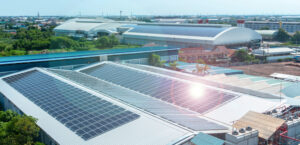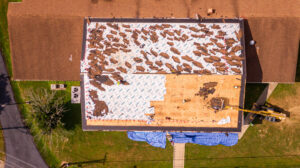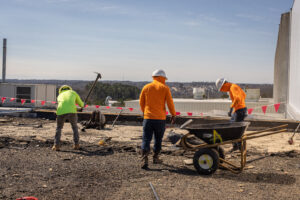There is an ever-increasing need for reliable and cost-effective roofing solutions for commercial and industrial buildings. One of the most popular options on the market is an EPDM (Ethylene Propylene Diene Monomer) rubber roof membrane. This rubber membrane has been used to install roofs since the mid-1960s. In recent years its popularity has been on the rise due to its affordability, flexibility, and durability. In this blog post, we will take a closer look at the advantages and disadvantages of EPDM rubber roofing membranes so that you can make an informed decision about whether or not it is suitable for your property.
Advantages of EPDM Roofing
Cost-Effective
EPDM roofing is often considered an excellent option for those who want an affordable roofing solution. EPDM rubber membrane costs less than other materials such as asphalt shingles, metal roofs, TPO, and PVC roofing. On average, EPDM costs between $5.25 – $9.50 per square foot, depending on the roof size.
Durable
EPDM roofing is exceptionally durable and can withstand various weather conditions, including extreme temperatures. The membrane is resistant to damage from hail, strong winds, snow, and ice. An EPDM roof can last between 20-30 years with proper maintenance and installation.
Easy to Restore
EPDM roofing membranes are easy to repair and restore. Since the membrane is made of rubber, it can be patched or repaired easily with a patch kit. If a whole section needs replacing, the old section can be removed and installed quickly and efficiently.
Flexible
EPDM rubber membranes are very flexible, making them easy to install on various roof types. The membrane can be easily stretched over different shapes and sizes, making it ideal for buildings with irregular or complex geometries.
Disadvantages of EPDM Roofing
Vulnerable To Damage In High Temperature
EPDM roofing is vulnerable to damage in high temperatures. The rubber membrane can shrink, stretch, or crack if exposed to extreme heat for long periods. It is important to keep the EPDM roof cool by providing adequate shading and ventilation.
Unappealing Aesthetic
EPDM roofing is not known for its aesthetic appeal. The rubber membrane has a dull, flat appearance and can be an eyesore on certain buildings. However, the EPDM roof can look more attractive with the addition of roof coatings or screen printing.
Susceptibility To Ponding Water
EPDM roofing is susceptible to ponding water, which can cause long-term damage. If the membrane is not properly installed or has seams that aren’t sealed correctly, water can accumulate and start to rot or mold the roof’s surface. It is important to ensure the roof is appropriately sloped and all seams are sealed to prevent water leakages and damage.
Prone to Damage
EPDM roofing is prone to punctures and tears from sharp objects such as branches and hail. The membrane does not hold up well against impacts and can be easily damaged by falling debris. To prevent damage, it’s important to keep the area surrounding the roof clear of sharp objects and regularly check for any signs of wear or tear.
When Is the Best Time to Install an EPDM Roof?
The best time to install an EPDM roof is during the warmer months when temperatures are above 40°F. The rubber membrane must be applied in warm temperatures to adhere to the surface and seal properly. If the temperature is below 40°F, then special heating equipment must heat the membrane before installation.
Additionally, installation during these months allows the contractor more time to expertly construct a secure and durable structure due to reduced chances of rain interruptions. Lastly, when maintained correctly, EPDM roofs can last up to 50 years and provide long-term security for any business or building owner.
The EPDM rubber membrane is an excellent choice when finding a reliable, budget-friendly roofing solution. Not only does this type of roofing provide long-term protection for any business or building, but it also boasts unprecedented durability and ease of repair and maintenance. While some drawbacks may be associated with using EPDM roofs, it provides a balance between cost and quality that is difficult to beat.
But don’t forget that correct installation and regular maintenance are essential for taking full advantage of any new roofing system. So make sure you hire a professional commercial roofing contractor certified and experienced in working with EPDM roofing systems. This way, you can be sure that your roof will last and provide value to your business for many years.






